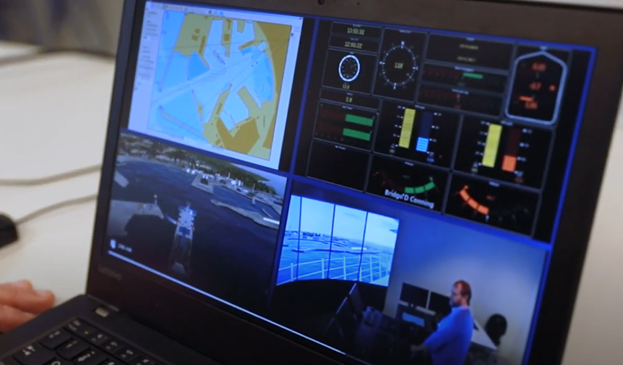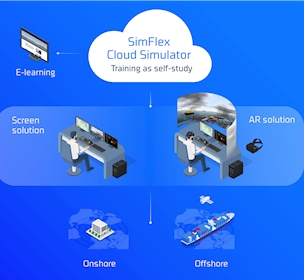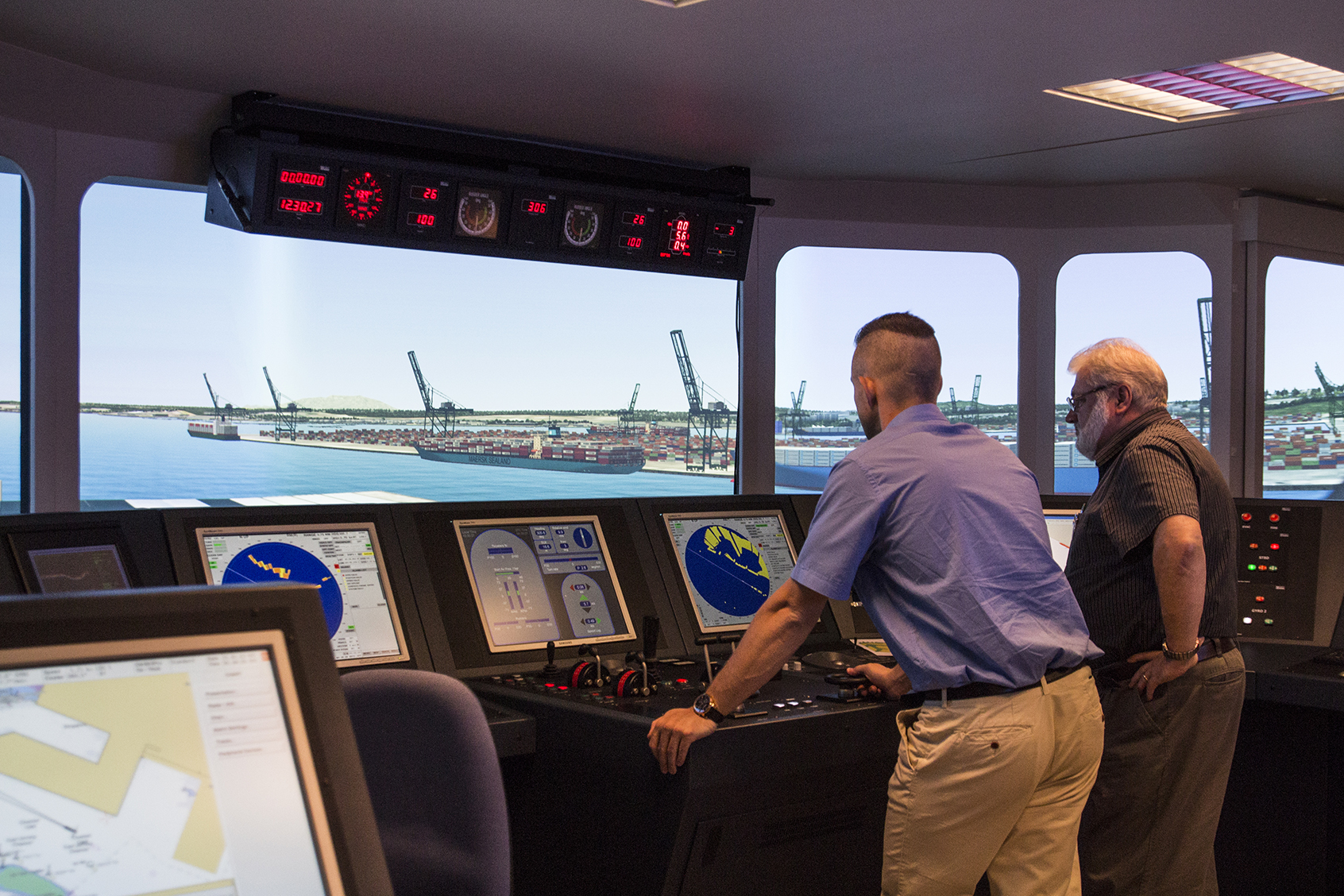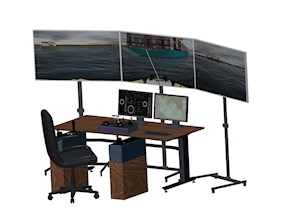Simulation studies for maritime operations
Simulation studies for maritime operations are instrumental in reaching and making the right decisions and in testing the complexity of a maritime project.

Ship bridge simulators have been used within the maritime world for decades, both for engineering and training purposes. They are essentially virtual vessels with mock-up bridges fitted with real consoles and manoeuvring handles navigating in real-time in a virtual world replicating future reality.
Virtual world replicating future reality
Virtual reality provides a very efficient simulator based environment for evaluation and risk assessment of numerous marine operations and projects such as:
- placement of navigational aids
- breakwater layout and alignment, including width and alignment of approach channels
- arrival/departure conditions for existing or new port facilities
- ship motions in both frequency and time domains giving accurate assessments of e.g. risk of grounding
- ship motions of moored vessels along an open or a closed structure
- controllability of vessels at limited water depth
- operational guidelines including determination of tug assistance
The value of simulating
This ability to test the consequences of what will happen if a project is implemented is instrumental in reaching and making the right decisions. The value of the decisions lies in screening various solutions and quantifying cost versus performance. Further, the simulations provide an opportunity to experience the planned future in real-time and therefore a clear picture of the results.
Simulations support the creation of concensus
One of the powerful benefits of simulation is that it affects in a variety of ways the perspective of those who participate. The participants begin to have a more holistic and better understanding of the complexities of the issues and various interests at stake, thereby creating common ground and essentially bringing stakeholders together.
Ship bridge simulators replicate reality
Our six-degrees-of-freedom DEN-Mark1 hydrodynamic model has been under continuous development for the last 30 years and is renowned for how it represents the temporal and spatial performance of a vessel accurately and down to detail. It does replicate reality.
Fast-time simulation
The pendent to the real-time simulator is the fast-time simulator which basically is a numerical navigator repeatedly navigating the same route a number of times. The numerical navigator mimics human decision-making and thereby introduces perturbations which result in different tracks for the same route and the same initial course. hence, the numerical navigator is a cost-effective way of evaluating various layouts and other features.
FAQ: Simulator studies

VR remote maritime simulator for training
/Service
The VR remote maritime simulator concept allows you to receive high-quality training remotely.

Ship bridge simulators
/Service
Ship bridge simulators for training, practicing and planning in a virtual environment.

Simulator based navigation training
/Service
Our training is based on many years of navigational experience and the best pedagogical tools

Facility
Ship bridge simulators

Article


